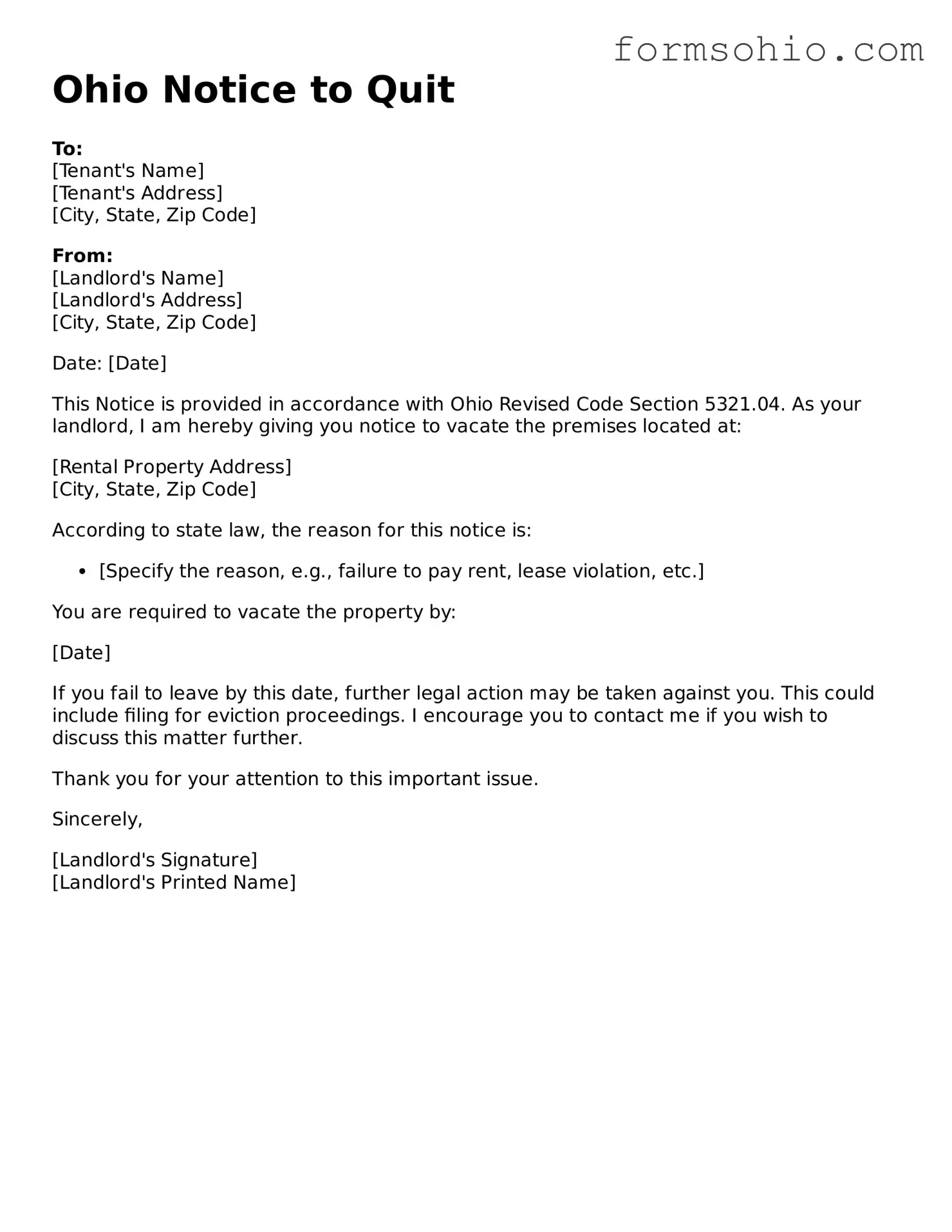Printable Notice to Quit Template for the State of Ohio
The Ohio Notice to Quit form is a legal document used by landlords to inform tenants that they must vacate the rental property. This notice typically outlines the reasons for termination of the lease and provides a specific timeframe for the tenant to leave. Understanding this form is essential for both landlords and tenants to ensure compliance with Ohio rental laws.
Get This Document Online
